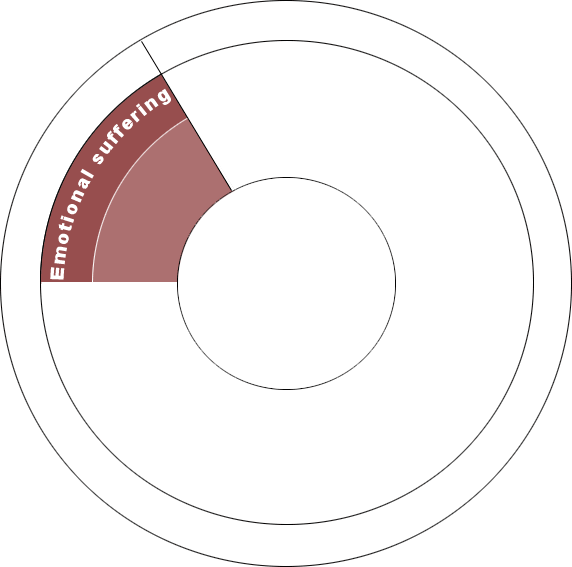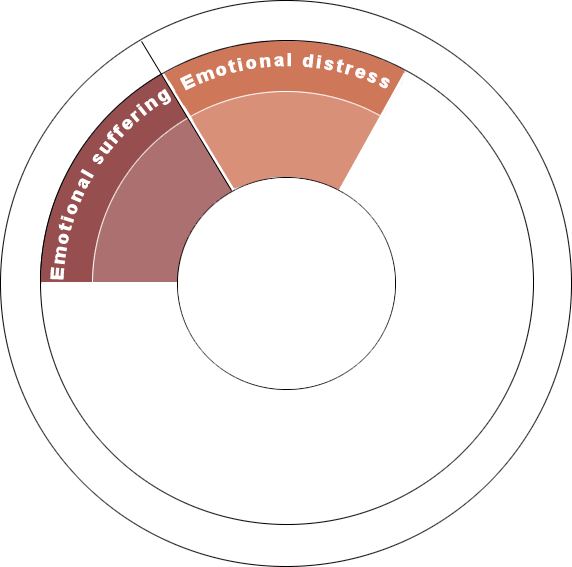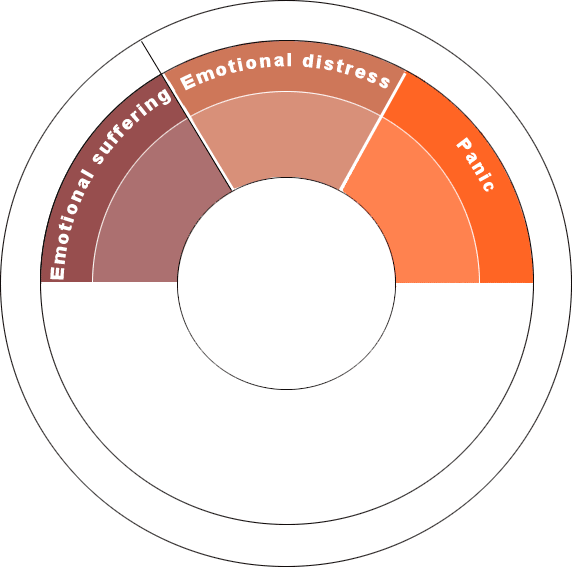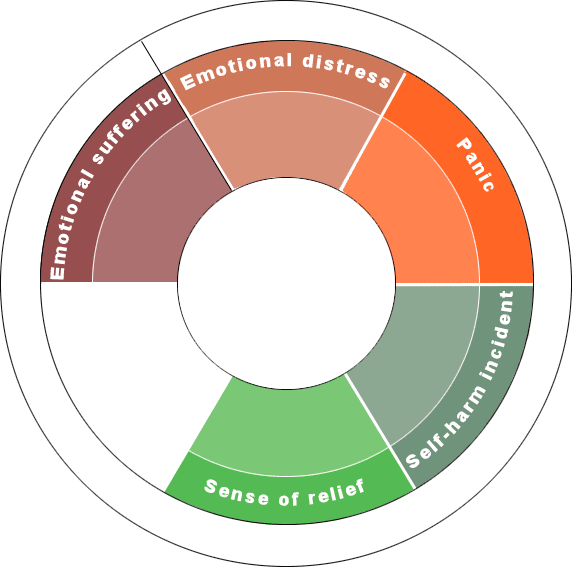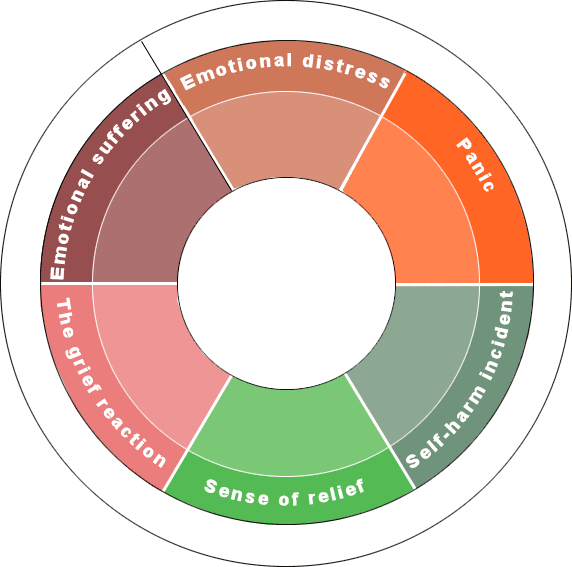The cycle of self-harm?

Select the tabs below to view cycle sections:
Cycle of self-harm - Introduction
Self-harm can bring a momentary sense of calm to negative feelings and emotions. However, this is often temporary and can lead to feelings of guilt and shame. This in turn can stimulate the original emotions which can lead to further self-harm. This is commonly known as the self-harm cycle.
Cycle adapted from the Sutton, J. (2007). Healing the Hurt Within: Understand Self-injury and Self-harm, and Heal the Emotional Wounds. 3Rev Ed edition. Oxford: How To Books p.187.
Point A: Emotional suffering:
The CYP are dogged by negative thoughts causing internal turmoil.
Point B: Emotional distress:
The CYP experiences powerful feelings of emotional distress. The CYP feels frightened, desperate, or dissociated (‘numb’).
Point C: Panic:
CYP feels out of control, or ‘too numb’ and experiences a compelling urge to self-injure.
Point E: Sense of relief:
The CYP feels calm, in control, and is able to think more clearly. The self-harm appears to reduce the individual's level of emotional and physiological arousal. This is where a CYP would typically present to the emergency department. Remember that although the CYP may behave ‘normally’ as a result of where they are in the self-harm cycle, their condition is serious.
Point D: Self-harm incident:
The CYP self-harms which helps elevate the sense of panic and negative feelings.
Point F: The grief reaction:
The reality of the CYP’s actions starts to sink in, which can lead to feelings of shame, guilt, self-disgust or even self-hate. This can evoke the original emotions and thoughts and return the CYP to point A in the cycle.
Click each segment of the cycle to find out more:


